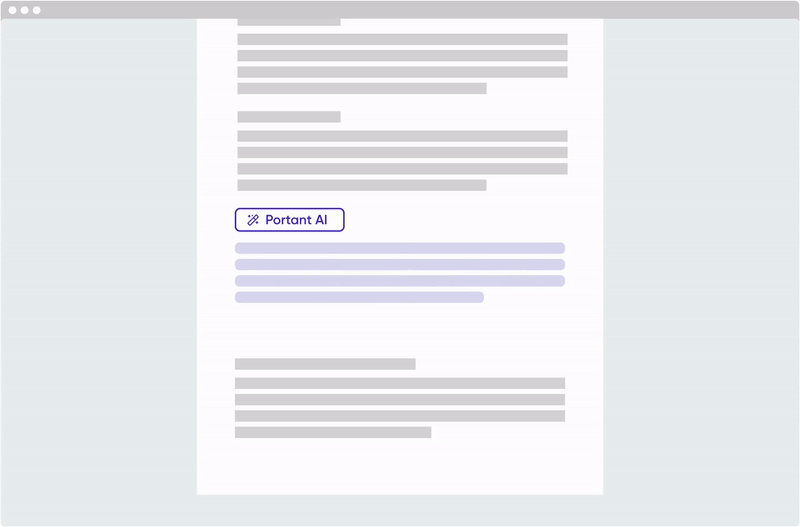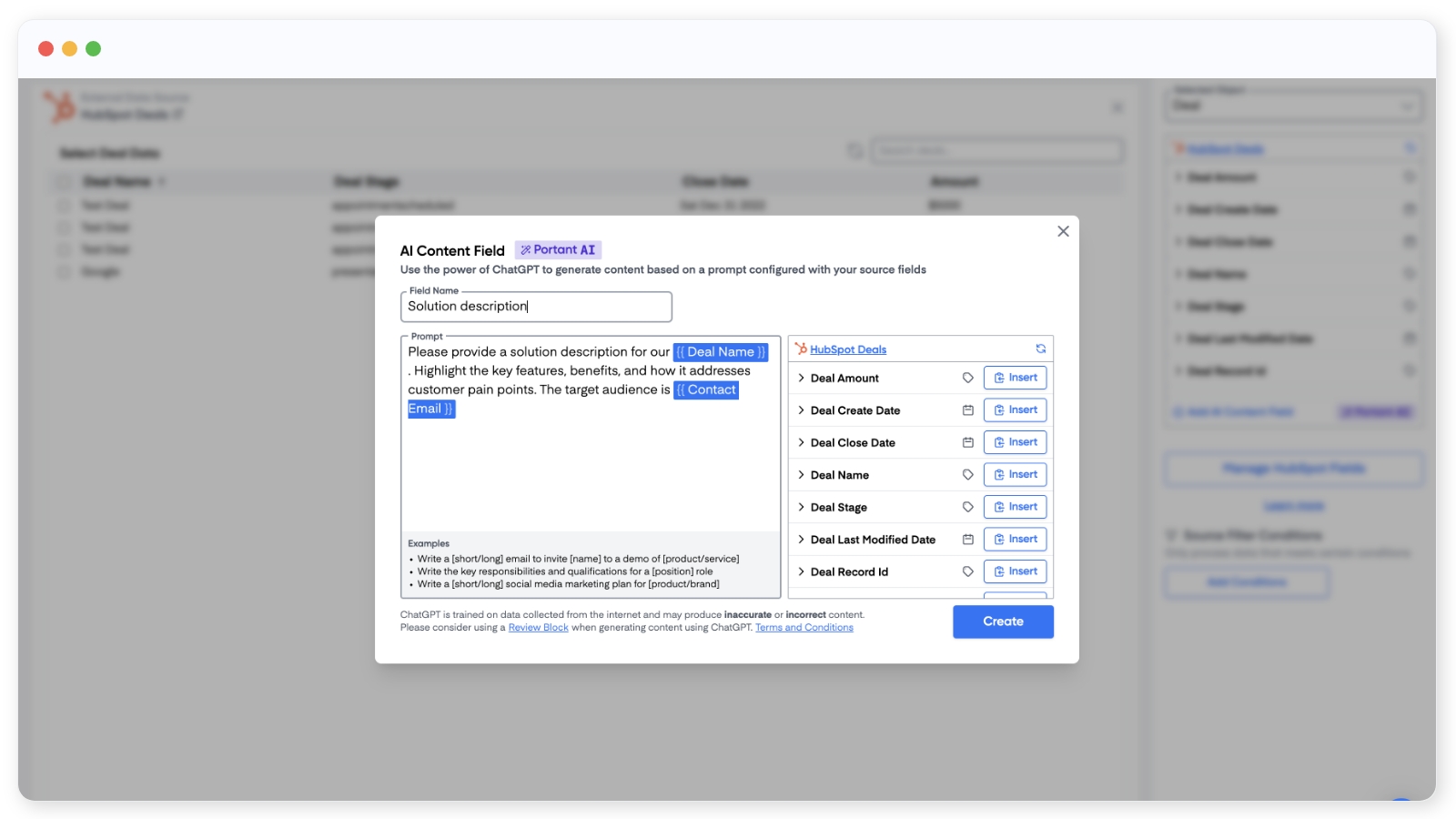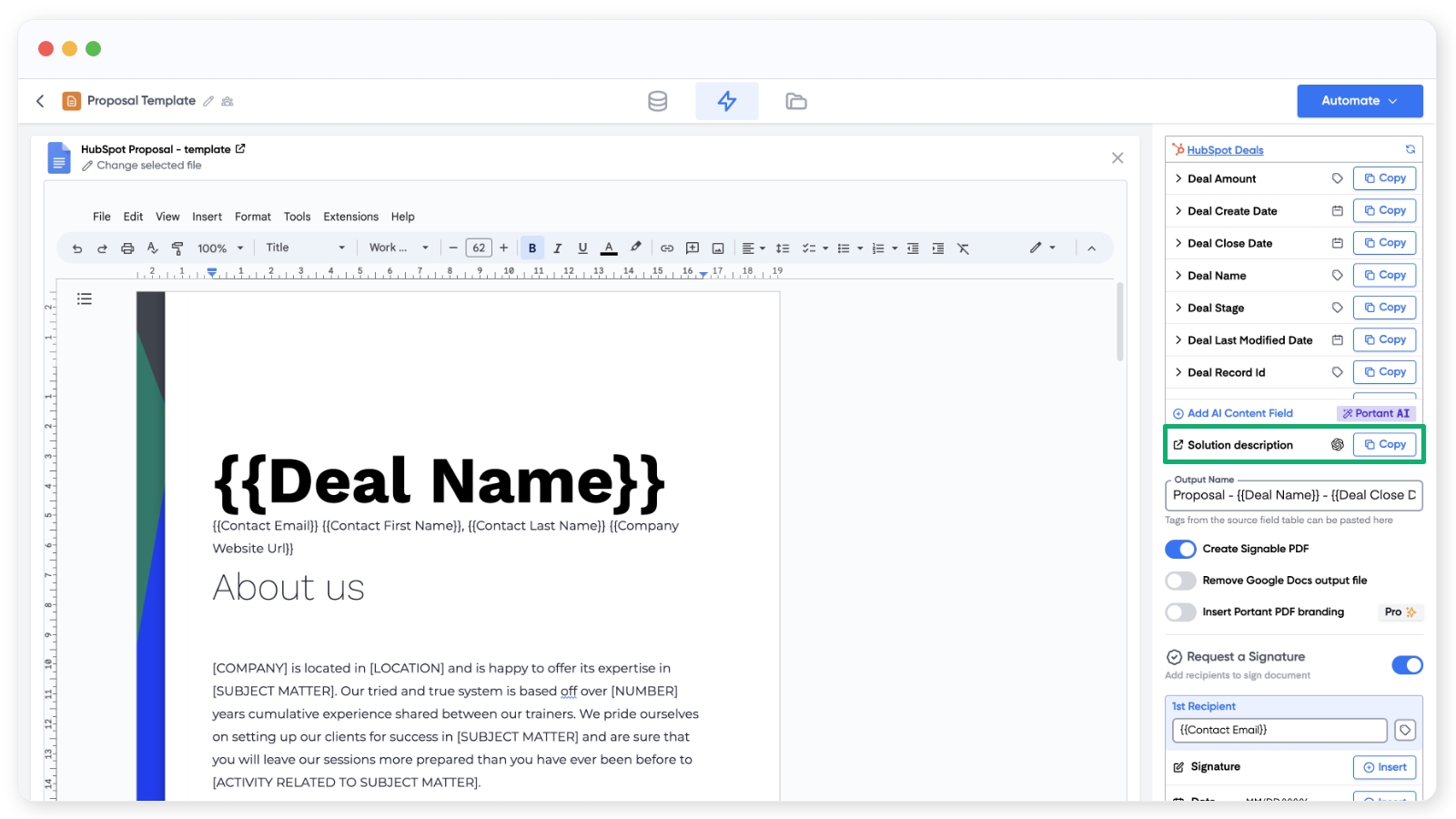Portant AI Content
Portant AI - generate AI content snippets
Portant AI seamlessly integrates ChatGPT-powered content snippets directly into your documents, automating the creation of personalised AI-generated content. This powerful feature enables you to effortlessly draft personalised document sections.
Check out our Dynamic Proposal Template to get started quickly:
Dynamic Proposal Template: Step-by-Step GuideTo see detailed examples of AI-generated content prompts in action, visit our Example Prompts page.
Portant AI content generation can be effectively combined with a review block, enabling you to streamline document creation while maintaining human oversight. This approach ensures accuracy, relevance, and alignment with your organisation's standards by allowing team members to review, approve, or refine the AI-generated content before finalisation.

How to add Portant AI to your document template
When you open a document template, you will see Portant AI at the bottom of the source table here:

When you click to add an AI content field you will then enter details for your prompt.
A prompt is a written instruction or query provided to an AI model to guide its generation of a response or output.

There are two things you need to enter:
A Field Name for your Prompt - this is what will be shown in your Source Table and in the {{tag}} within your document.
A Prompt - this is the written instruction or query provided to guide its generation of a response or output. You can use fields from within your source to construct your prompt. This will make the prompt content dynamic for each document generated or each time the workflow is run.
When you have constructed your prompt, you can click Save.
The final step is to enter the prompt in your document just like you would enter any other tag.

In most cases, it is a good idea to add a Review Block to your workflow after AI content has been generated. A review block allows you to review and edit the document generated mid-way through a workflow.
Feedback and feature suggestions
We created Portant in 2021, and the feedback we have received since then has been very helpful and greatly appreciated. If you have any feedback, please feel free to send us an email at [email protected]
Last updated
Was this helpful?